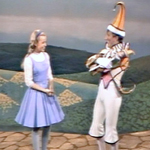

Maybe it doesn’t mean shit to you whippersnappers, but Alice was one of the favorite properties of many young geeks growing up in the late 19th century. And fave genre author Lewis Carroll would be happy to know that his content still exists today. Through the Looking-Glass, and What Alice Found There is Lewis Carroll’s 1871 young adult beach read sequel to the 1865 blockbuster franchise-starter Alice’s Adventures in Wonderland.
Part 2 is a similar nonsense adventure tale where half a year later Alice decides to step through a mirror into a fantasy world on the other side for one last mission. Instead of a government and military force based on playing cards, this time they’re based on chess pieces. TOTALLY DIFFERENT. It’s just a shame Carroll gave it that cumbersome title instead of something sleek like A2: DARK REFLECTION so it would’ve caught on better.
In the tradition of the BOURNE or FRIDAY THE 13TH series, many of the elements associated with the Alice in Wonderland intellectual propertyverse are actually from part 2. The singing flowers, the weird, rotund twin manbabies Tweedle Dee and Tweedle Dum and the poem that they recite (“The Walrus and the Carpenter”) were all included in Disney’s 1951 animated classic ALICE IN WONDERLAND, which continues to be the best known version of the story. Alice finds the poem “Jabberwocky” in a book, but unfortunately it made no sense, audiences couldn’t relate. Luckily we got his backstory in ALICE IN WONDERLAND ORIGINS: JABBERWOCKY (1977) by Terry Gilliam.
This summer we have ALICE THROUGH THE LOOKING GLASS, the sequel to Tim Burton’s worst or second worst (after PLANET OF THE APES) movie. I’m not sure I’m gonna see that one but I tried to find an earlier adaptation to watch for this SUMMER OF 2016: ORIGINS series. There are at least five to choose from. The 1987 made-for-TV cartoon version seemed way too shitty for me to sit through, but here’s the scene where Mr. T (ROCKY III), near the end of his run on The A-Team, voices the Jabberwock:
I had higher hopes for the 1998 British TV version because it starred Kate Beckinsale of UNDERWORLD, VAN HELSING and TOTAL RECALL fame. Unfortunately this is not a blue-tinted highly digital cartoonish action movie, but a very dry and cheap looking adaptation of what seems like a community theater version of the Through the Looking Glass story.
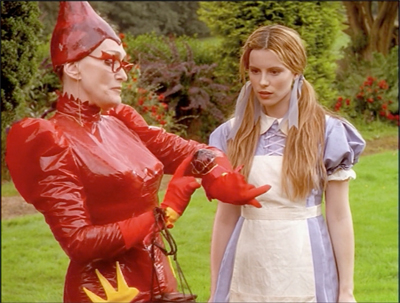
The costumes and occasional digital effects are very home made looking. You can see that the Red Queen here (Sian Phillips, EWOKS: THE BATTLE FOR ENDOR) is pretty fancy design-wise, but is made out of plastic wrap. Most of it seems to just be filmed in some woods they had access to behind somebody’s house. They do try to get filmatistically weird a couple times, like during the Walrus and the Carpenter poem they have a couple little flashes of Mr. Bill-style crude clay versions of the characters. But mostly it’s very slow and lifeless and you have to deal with way too many scenes of actors standing around reciting the poems from the book instead of bringing them to visual life.
It is kind of creative that the talking flowers are played by models with outfits that sort of give the impression of flora more than literally depict it. Kinda abstract.
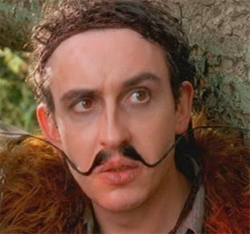 I guess the highlight of the half I watched before having to turn it off was a scene with Steve Coogan (PHILOMENA, THE INDIAN IN THE CUPBOARD) as the guy who comes out of a tree to tell her about the weird insects on that side of the mirror. He doesn’t really get to be funny, but does the best of anybody in the cast at creating a character. Interesting to note, the waxed mustache he had was, at the time, considered to be a humorously fantastical thing that only a ridiculous cartoon character or perhaps professional juggler would purposely grow on his face. Now it is how most young men look.
I guess the highlight of the half I watched before having to turn it off was a scene with Steve Coogan (PHILOMENA, THE INDIAN IN THE CUPBOARD) as the guy who comes out of a tree to tell her about the weird insects on that side of the mirror. He doesn’t really get to be funny, but does the best of anybody in the cast at creating a character. Interesting to note, the waxed mustache he had was, at the time, considered to be a humorously fantastical thing that only a ridiculous cartoon character or perhaps professional juggler would purposely grow on his face. Now it is how most young men look.
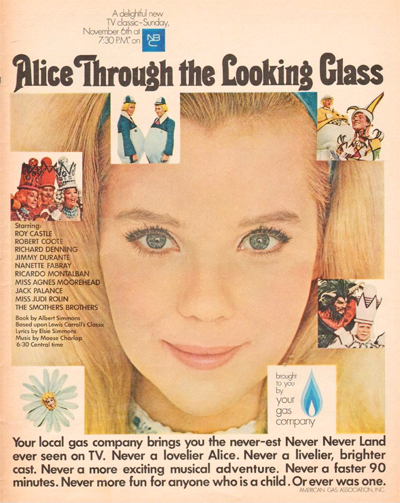 The version I finally settled on is the 1966 pre-taped TV musical, with songs by Moose Charlap (the Peter Pan musical) along with Harper MacKay (also the art director of this one) and Elsie Simmons. Director/producer Alan Handley had done shows and specials with Dinah Shore, Julie Andrews, Danny Thomas and Esther Williams, not to mention the 30th-32nd Academy Awards (best pictures those years: BRIDGE ON THE RIVER KWAI, GIGI, BEN-HUR), so this is very much a traditional TV production of that period, done on very theatrical sets with I-think-canned laughing and cheering audience, but it looks way more lavish than the on-location Beckinsale one. The costumes are pretty elaborate, and are designed by the team of Ray Aghayan and Bob Mackie (producer Bob Wynn says in an extra that it might’ve been the biggest costume budget in television history).
The version I finally settled on is the 1966 pre-taped TV musical, with songs by Moose Charlap (the Peter Pan musical) along with Harper MacKay (also the art director of this one) and Elsie Simmons. Director/producer Alan Handley had done shows and specials with Dinah Shore, Julie Andrews, Danny Thomas and Esther Williams, not to mention the 30th-32nd Academy Awards (best pictures those years: BRIDGE ON THE RIVER KWAI, GIGI, BEN-HUR), so this is very much a traditional TV production of that period, done on very theatrical sets with I-think-canned laughing and cheering audience, but it looks way more lavish than the on-location Beckinsale one. The costumes are pretty elaborate, and are designed by the team of Ray Aghayan and Bob Mackie (producer Bob Wynn says in an extra that it might’ve been the biggest costume budget in television history).
20 year old Judi Rolin plays Alice with the blond hair and blue and white dress made iconic in the Disney version. She walks across stylized sets and painted backdrops…
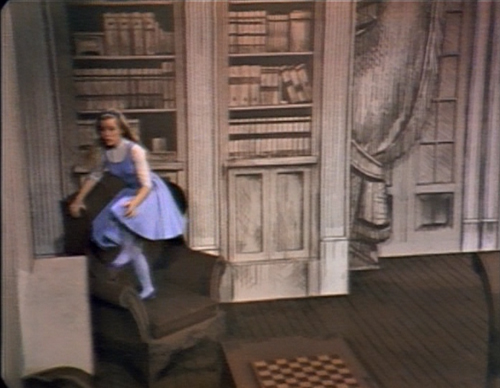
…talking to characters who she knows from having read books and they are always surprised she knows who they are. She also talks to various red or white chess piece people who make wacky jokes like when the Red Queen (Agnes Moorehead, CITZEN KANE) explains that she painted a forest pink because it’s only for girls. Ricardo Montalban (SPY KIDS 2) plays The White King. This was the year before he first played Khan in that Star Trek episode.
The Smothers Brothers play the Tweedle Brothers, so it’s more like a variety show sketch version with banter, song and dance than the usual threateningly weird fat dudes. Jimmy Durante plays Humpty Dumpty, whose wall is only about Alice’s height, but I guess that’s plausible because from what I have read egg bodies are very injury prone. He gets Alice to recite and then sing the “Jabberwocky” poem, and the audience laughs like it’s a bunch of punchlines.
A major change is that the Jabberwock is a Devil type monster with ram horns and bat wings who plots against Alice in an evil lair and chases after her and stuff. That’s some bullshit. But the good news is he’s played by Jack Palance. There’s also a non-canonical character called Lester the Jester (Roy Castle, LEGEND OF THE WEREWOLF) who becomes her best friend. He saves her life twice by warping himself Nightcrawler-style and hopping around in front of the Jabberwock, taunting him. Reportedly this character was added as a ripoff of the Scarecrow from the then-gaining-in-popularity-on-television THE WIZARD OF OZ. To me he doesn’t fit the Carroll world at all, but that didn’t stop the Mr. T version from having their own added jester main character called “Tom Fool.”
At the end all the chess pieces end up on a big chess board. By this point they’ve had a number of impressive sets and the presence of two live giraffes and ten flamingos, so they don’t need to show off any more, but the simple chess set opens into an impressive coronation scene.
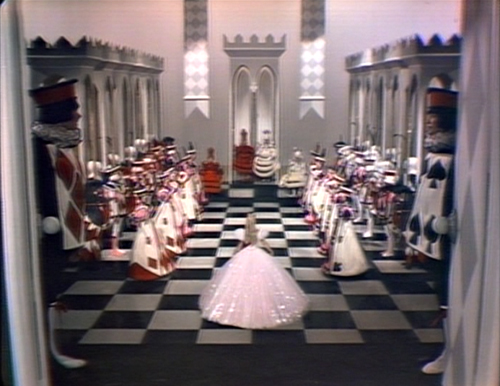
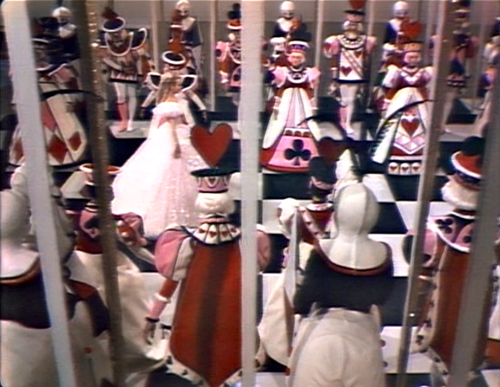
Wynn talks in the making-of featurette about it being one of his proudest projects. He also says that “the gas company liked the idea,” so that’s who decides what kind of entertainment we get. (Check out the ad earlier in the review, which says “Your local gas company brings you the never-est Never Never Land ever seen on TV.”) He worried about casting Palance, who was notorious for punching a few of his directors (this almost happened to Tim Burton on BATMAN). But when Wynn met with him and heard his side of the story he says “I would’ve hit those directors too.”
Based on what I’ve seen here, I have concluded that this sort of stage musical extravaganza is probly the best format for Alice in Wonderland besides a book. The Burton movie had some beautifully weird visuals (I remember the Tweedles looking like they stepped out of a creepy painting) and a funny performance by Anne Hathaway as the White Queen, but I hated the decision to force Carroll’s nonsense into a quest story with Alice as a chosen one who has to lead a battle. It’s just an inescapably stupid idea that takes the fun out of it and makes it harder to forgive Johnny Depp’s annoying glam Mad Hatter.
Even here the adapters gave in to the temptation to add a new antagonist, instead of staying faithful to the free-flowing randomness that makes Carroll’s stories appealing. The Beckinsale version did not do that, but it gives an illustration of why film and TV makers would think it was necessary. A feature length movie has different expectations than a bed time story (or a Disney musical) when it comes to narrative, so at least in that cheap TV format the strung together silly encounters don’t feel like they’re adding up to much.
So next time let’s have some songs and some giraffes, or maybe let’s just leave it alone.
original version: 1871 book.
other versions: 1928 silent movie, 1966 TV musical, 1973 BBC TV movie, 1982 Soviet animated short, 1987 TV cartoon movie, 1998 Channel 4 movie, plus various stage versions and Alice in Wonderland movies and TV shows that use elements of it.

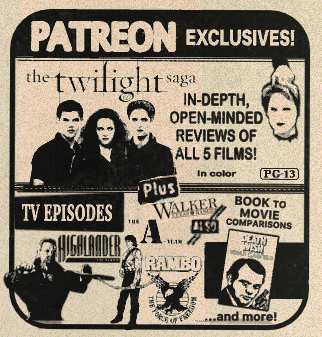
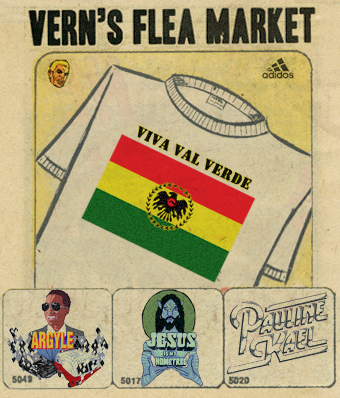
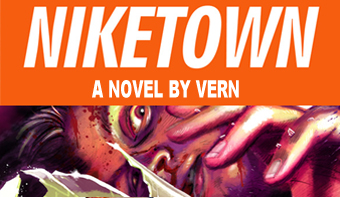
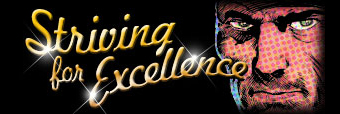
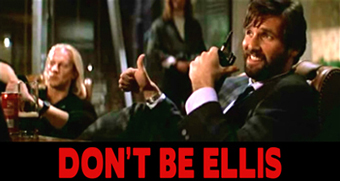
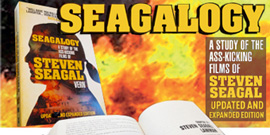
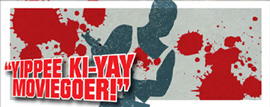








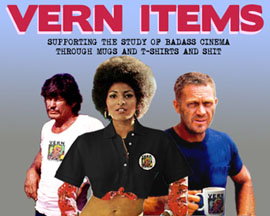
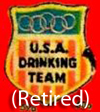
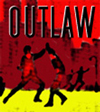






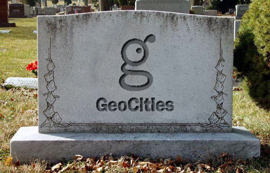
June 29th, 2016 at 10:10 am
My favorite Alice adaptation is still the non-Tim Burton Disney version. I’m not sure of it’s current cultural appreciation but on the Peter Pan DVD special features the commentaries and interviews make sure you know Walt hated it and they (the animators) regret making it. That always dismayed me because I think it is one of their finest achievements and it is honestly the only Alice adaption that I think is any good.
I have not seen this Gas-produced version so I have no opinion on it.